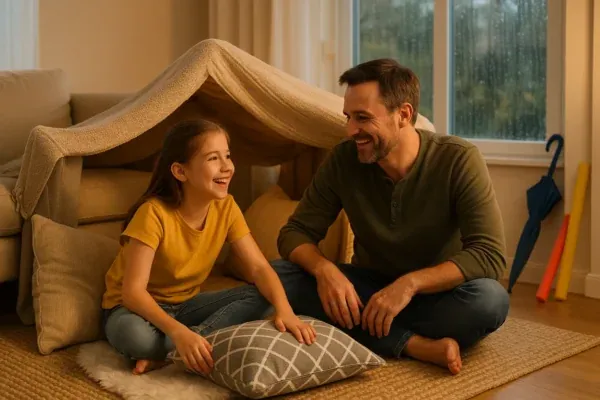November 3, 2025
Why Pausing Helps Kids Regulate Emotions and Connect Better
In a world full of alerts, deadlines, and distractions, most of us are running on empty. But one of the most powerful tools for emotional regulation in children is right under our nose—literally.
Your breath, and the energy behind it, can be one of the simplest and most effective ways to refill your child’s energy tank before burnout. Scientific research shows that helping kids pause, breathe, and reflect improves their ability to manage emotions, relate to others, and feel a stronger sense of belonging at home, in school, and in life.
The Power of Pausing and Breathing
Slowing the breath does more than “calm down” the body. It activates the parasympathetic nervous system—the body’s natural rest-and-recovery mode. When children access this system, they can regulate emotions, think clearly, and respond more thoughtfully.
Even short breathing or mindfulness moments throughout the day can build emotional control, attention, and connection.
What Research Tells Us About Emotional Regulation
Recent studies highlight the impact of breath and mindfulness-based practices on children’s mental and emotional health:
Breath-focused practices reduce anxiety and improve mood and attention, sometimes more effectively than traditional mindfulness (Balban et al., 2023, Cell Reports Medicine).
Brief daily mindfulness practices enhance resilience and lower reactivity in social situations (Kuyken et al., 2022, Mindfulness).
Moments of quiet reflection foster empathy and emotional awareness—core ingredients for peer connection and classroom belonging (Dvorsky et al., 2021, Journal of Youth and Adolescence).
Together, these findings show that pausing is not just a calming tool—it’s a foundation for social–emotional learning.
Why This Matters for Social Growth and Connection
Children who learn to pause are better able to:
Name what they’re feeling
Respond thoughtfully instead of reacting impulsively
Build stronger, more respectful connections
Even a 60-second pause after school can shift the tone of an entire evening. When practiced regularly, these moments create a buffer between feeling and behavior, helping children navigate sibling conflicts, test anxiety, and friendship challenges with greater confidence.
Simple Ways to Practice Pausing at Home
You don’t need a full mindfulness routine to start. Try these:
One silent minute together before dinner
A shared deep breath before tackling homework
Asking, “What are you feeling in your body right now?” instead of “What’s wrong?”
And when your child takes a breath before responding or steps away before yelling—celebrate it. That’s emotional growth in action. Each pause strengthens the brain’s ability to self-regulate and connect.
Teaching kids to pause doesn’t just help them feel calm—it helps them feel seen, safe, and capable of connection, even when emotions run high.
In that pause is power. And often, healing.
Chris Steer, MPH.
Social Learning Coach, Frankenberger Associates







